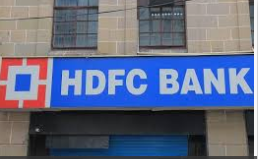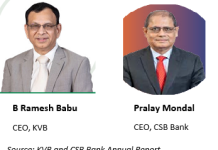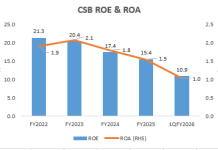Two insights on HDFC Bank were published on Smartkarma on November 22 and November 30, 2017 and this writer was the first analyst in the industry to highlight that India’s blue-blooded and premier bank would be in the embarrassing position to publicly report Reserve Bank of India (RBI) divergence on its reported gross non-performing assets and join the unsavoury ranks of Yes Bank and Axis Bank.
On April 18, 2017, the RBI issued a notification to banks entitled “Disclosure in the “Notes to Accounts” to the Financial Statements – Divergence in the asset classification and provisioning,” which stated,
“There have been instances of material divergences in banks’ asset classification and provisioning from the RBI norms, thereby leading to the published financial statements not depicting a true and fair view of the financial position of the bank [bold ours]… it has been decided that banks shall make suitable disclosures as per Annex, wherever either (a) the additional provisioning requirements assessed by RBI exceed 15 percent of the published net profits after tax for the reference period or (b) the additional Gross NPAs identified by RBI exceed 15 percent of the published incremental Gross NPAs for the reference period, or both”
While new private sector banks like Indusind Bank and ICICI Bank reported RBI divergence for the year ended March 31, 2016 (FY2016) and Yes Bank and Axis Bank reported two consecutive years (FY2016 and FY2017) of RBI divergence, nobody expected HDFC Bank to report RBI divergence. It therefore came as a surprise at the time of HDFC Bank’s quarter ended September 30, 2017 (2QFY2018) results on October 24, 2017, when it stated,
“11. The Bank had participated in a project loan (where the Bank had a 2.3% share) which underwent flexible structuring under the 5:25 regulatory framework as approved by the Joint Lenders Forum (JLF) in February 2016. The Bank is in ongoing discussions and correspondence with the regulator in relation to certain observations made on the implementation of the JLF-approved flexible structuring scheme. The conduct of this account with the Bank has been standard throughout. Nevertheless, in the interim, the Bank has made sufficient contingent provisions for this account as at September 30, 2017.”
On the analysts call held on the same day, the bank stated that it had made a provision of Rs 7 bn (49:00 min of call) for the unnamed corporate account. Strangely, HDFC Bank declined to disclose the quantum of the disputed loan. It was therefore alarming that, within 24 hours of the announcement of HDFC Bank’s results, the RBI ordered HDFC Bank to classify the account as NPA. Accordingly, the bank issued a statement on October 25, 2017, which stated,
“The Bank has received communication from the regulator advising it to classify the said account as a non-performing asset. The same has been duly complied with.”
According to Bloomberg, 54 analysts cover HDFC Bank, which has a market capitalization of US$ 73.2 bn and trades at 5.1x P/BV. Around 91% of these analysts maintain a “Buy” recommendation. More analysts track HDFC Bank than any other bank in the Indian banking industry, and probably in the world. In addition, India has three English business TV channels (CNBC TV-18, ET Now and BTVi), apart from BloombergQuint on a digital platform and five daily English business newspapers (Economic Times, Business Standard, Business Line, Financial Express and Mint). All these media platforms have dedicated journalists tracking the Indian banking industry. With so many experienced individuals covering HDFC Bank, unearthing the name of the disputed corporate account and the quantum of its exposure on HDFC Bank should have been high priority. Yet from October 24 till November 22, 2017 this writer was unable to find any sell-side research or media report disclosing the name of the corporate, the amount or whether its inclusion will compel the bank to disclose RBI divergence.
When Axis Bank reported RBI divergence for FY2017, media reports highlighted that a major corporate account was Jindal Steel and Power (JSPL), and there were rumours that it was the same account for HDFC Bank as well. The Ministry of Corporate Affairs (MCA) website discloses bank-wise charges on companies, and hence it is possible to estimate a bank’s exposure (only where it is collateral-backed) on specific companies. Prior to the publication of HDFC Bank’s RBI divergence insights, this writer had interacted with HDFC Bank officials, and they did not deny that the concerned account was JSPL, nor did they dispute the amount disclosed by the MCA. More importantly, the officials indicated that sell-side research analysts were also aware of the account and the estimated exposure of HDFC Bank. But surprisingly, it appears no sell-side analyst had questioned HDFC Bank as to whether the inclusion of the JSPL exposure of Rs 17.5 bn (MCA disclosure) would qualify for RBI divergence. As HDFC Bank’s gross NPAs for FY2017 are disclosed at Rs 58.9 bn, and the inclusion of the JSPL NPA amount far exceeds 15%, it was obvious that once RBI instructed the bank to classify the account as NPA, it immediately qualified for RBI divergence, and hence it was price sensitive information which analysts and journalists should have immediately reported. Yet, despite all the information being available in the public domain, sell-side research and the business media collectively took a vow of silence.
As this writer has been covering the Indian banking sector for over two decades, business TV channels and the print media regularly request him for interviews, panel discussions and quotes for any, even minor developments in the sector. However, despite the summary of both the HDFC Bank insights on RBI divergence being available in the public domain, not a single business TV channel or print media contacted this writer for this news-breaking story. Although the Indian business media unitedly ignored the story, noted Bloomberg columnist, Andy Mukerjee cited the insight in his article, “World’s Most Richly Valued Lender Has an Unhappy Secret” on December 3, 2017. His column was carried on the website of the Washington Post, Economic Times,BloombergQuint and Live Mint and the link was widely circulated on email and social media. On account of the Bloomberg story, the insight, “HDFC Bank – The Curious Case of Jindal Steel and Power” which was trending on Smartkarma in the no. 4 slot, shot up to the no. 1 slot.
Normally, when such a news story appears on a prominent bank, sell-side research write updates with their views and media does follow on stories. But here again, a wall of silence was raised by the media and the sell-side post the Bloomberg story. It was only Daniel Tabbush, a fellow insight contributor and independent analyst who published “HDFC Bank – Finding the Next Jindal Steel Power” as a follow-up analysis on December 5, 2017.
The manner in which the media treats a bank like HDFC Bank is highlighted in this CNBC TV-18 (the market leader in Indian business TV) interview with Paresh Sukthankar, the deputy managing director, HDFC Bank on December 8, 2017 (i.e. 5 days post the Bloomberg article). The deputy CEO of HDFC Bank was interviewed by Latha Venkatesh, the executive and banking editor, CNBC TV-18 and by Raamdeo Agrawal, the CEO and Co-founder of Motilal Oswal Financial Services. Although the programme was covering Motilal Oswal’s annual wealth creation conference, here was an opportunity for the media and sell-side research on a live show to enlighten viewers and discuss the topical RBI divergence with the deputy CEO of the bank. But no, not a single question was posed to HDFC Bank on RBI’s NPA divergence, and the entire interview was on how HDFC Bank had delivered wealth to its shareholders. Such conduct by the media is the norm and is not the exception, when it comes to dealing with critical stories involving large companies.
In Profits (and Perils) of Large Cap Independent Research, this writer had highlighted that there exists a huge opportunity for independent research to provide critical, non-consensus analysis of large companies, as sell-side research and business media, anxious to maintain corporate access, deliberately ignore critical analysis of large corporates. Sell-side analysts have been reduced to arranging meetings/conferences for institutional clients with the companies they cover, and any critical commentary on the company would result in the concerned company blacklisting the analyst. In a free market economy, in theory more competition is to the advantage of the customer, but as the HDFC Bank RBI divergence story shows, the huge number of analysts and journalists deliberately ignored and continue to be oblivious to a story that is staring at them in their face and it is in this void that independent research can flourish and prosper.
DISCLOSURE & CERTIFICATION
I, Hemindra Hazari, am a registered Research Analyst with the Securities and Exchange Board of India (Registration No. INH000000594) I hold equity shares in HDFC Bank mentioned in this report. Views expressed in this report accurately reflect my personal opinion about the referenced securities and issuers and/or other subject matter as appropriate. This report does not contain and is not based on any non-public, material information. To the best of my knowledge, the views expressed in this report comply with Indian law as well as applicable law in the country from which it is posted. I have not been commissioned to write this report or hold any specific opinion on the securities referenced therein. This report is for informational purposes only and is not intended to provide financial, investment or other professional advice. It should not be construed as an offer to sell, a solicitation of an offer to buy, or a recommendation for any security.














